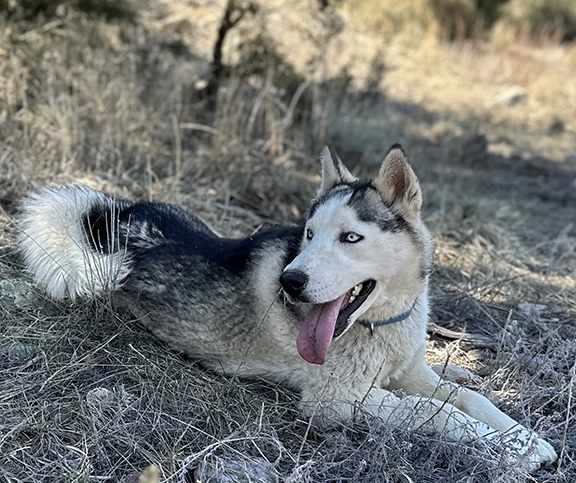
02 May Second Chance: Foxtails, Goat Heads, and Pets + Updates
For 30 years, the Animal Resource Center and Shops of Second Chance Humane Society have been serving Ouray, San Miguel, and Montrose Counties. Our adoption hours are from Wednesday to Sunday, 11 a.m. to 5:30 p.m. View shelter pets and services online atwww.secondchancehumane.org. Connecting Pets, People, and Community While Saving Lives.
View shelter pets and services online: www.adoptmountainpets.org.
Go here for more options from Second Chance.

As the weather gets warmer and our pets are outdoors, be aware of two common and invasive weeds that can make a simple walk dangerous. The foxtail plant is a grass-like weed, mostly found in the Western half of the U.S., and it is very common in our area. Goat heads, also known as puncture vine, produce hard, small stickers with sharp spines that pierce the skin and paws.
Foxtails have barbed seed heads that can work their way into any part of a dog or cat, from the nose to between the toes and inside the ears, eyes, and mouth. The danger of foxtails goes beyond simple irritation. Because these tough seeds don’t break down inside the body, an embedded foxtail can lead to serious infection. It can even lead to death if left untreated. Foxtails travel. They move relentlessly forward, never back, from inside the nose to the brain. They can dig through the skin or be inhaled into, and then perforate a lung. They can cause discharge, abscesses, swelling, pain, and, as noted above, death. Foxtails can easily become embedded between tender toes. Check for foxtails if a pet has swelling or limping or is licking the area.
Goat heads grow on puncture vines, a prolific weed that can get by in the hottest, driest of summers. When the vine dies back, the seeds—goat heads—dry and harden and their spikes become needle-sharp spears ready to attach to any passerby. That is how puncture vine propagates: by relying on animals and people to move the seeds from place to place. The sharp burrs can cause serious injury to pets. Often a pet will try to get the burr out by biting at the skin, generally driving it deeper down.
If a dog or cat is shaking his head, tilting it to the side, or scratching incessantly at an ear, that could be the sign of a foxtail or goat head — one that may be too deep inside the ear canal to see. A veterinarian uses a special scope to find and remove them.
It is important to examine your pet after being outdoors in areas where foxtails and goat heads are prevalent. Catching them before they lodge into the skin is the best prevention. A fine-toothed comb or a brush can be used to remove foxtails, and remember it is important to check between the toes, paw pads, and ears. Tweezers can be used to remove a goat head or a foxtail that has slightly embedded itself somewhere. After removal, wash the area gently with antibacterial soap and thoroughly rinse with tap water.

Ace
Ace is a male husky who is only a year old. He loves people and lived with children in the past. Ace still has a lot of energy and puppy manners, so potential adopters should be willing to work with him to grow into his best self. Ace will need continued obedience training. He is a typical husky and would benefit from someone familiar with the breed.
AND… To continue the Second Chance Highlights section, we want to share the following:
The shelter is now open to volunteers, and should be open to the public by the weekend (fingers crossed).
May 8-15, we are offering reduced-fee adoptions for Bissell Pet Foundation’s Empty the Shelters
Our shop in Telluride has 50% off everything through May 3.


Sorry, the comment form is closed at this time.